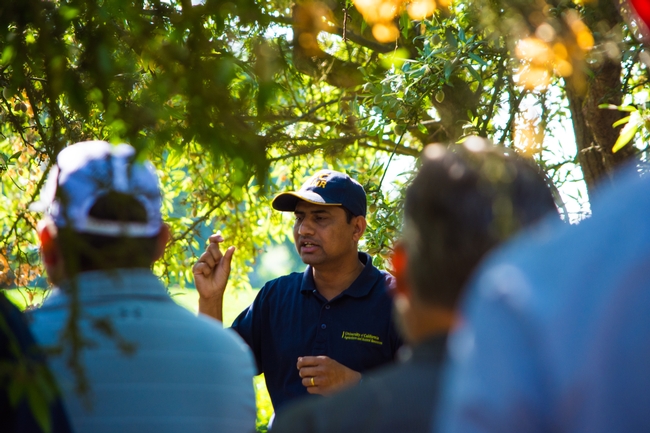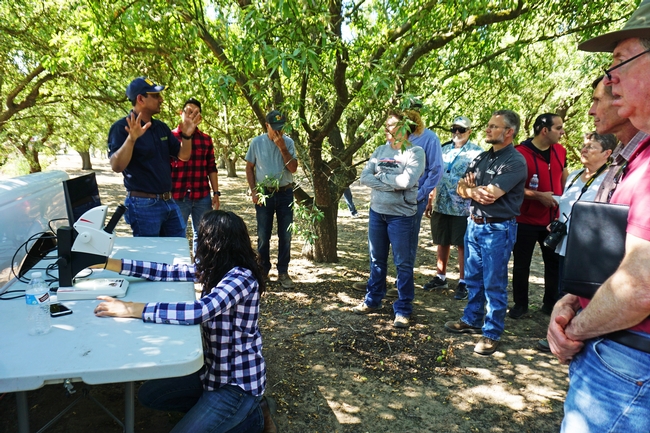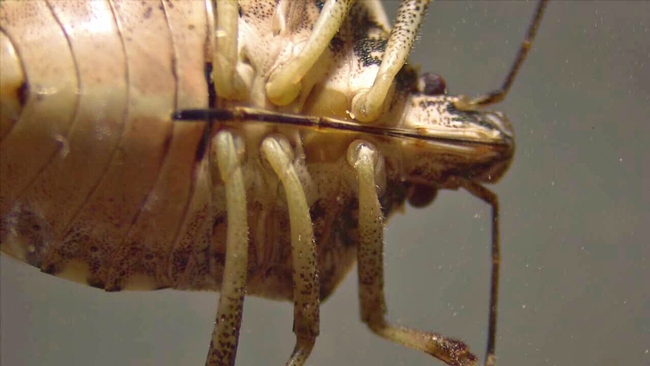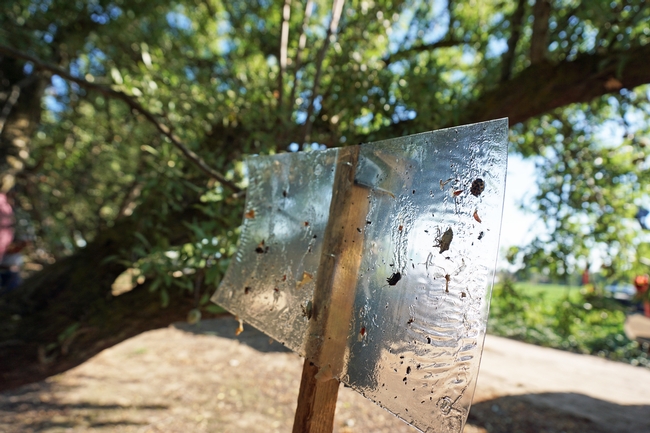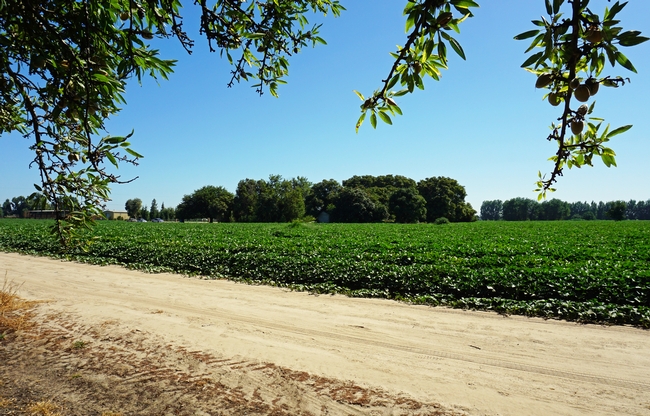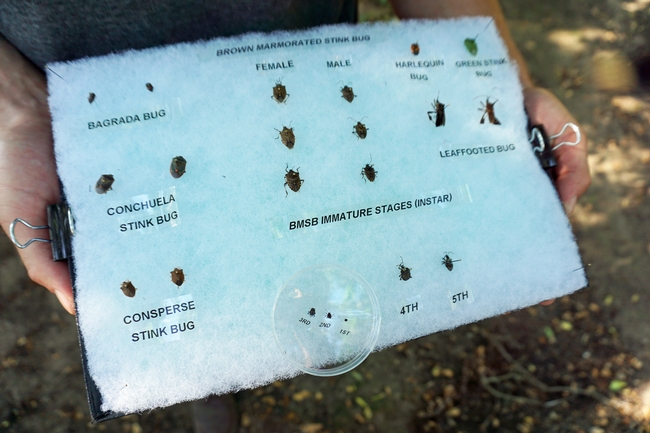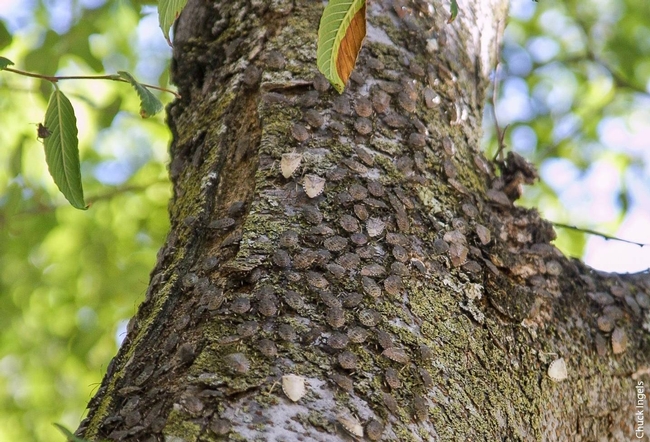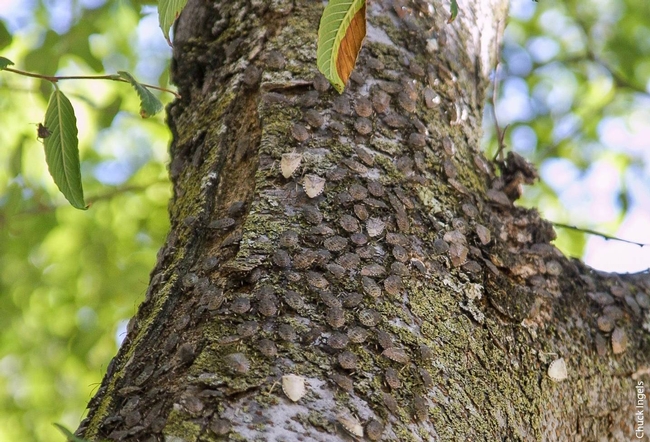
Posts Tagged: marmorated
Invasive Spotlight: Brown Marmorated Stink Bug
Stink bugs are common pests in gardens but the brown marmorated stink bug, or BMSB, is of...
UCCE advisor addresses severe brown marmorated stink bug damage in Turlock orchard
Last May, a Turlock almond grower noticed nearly all the nuts on a row of trees in his orchard had fallen to the ground.
“It looked like we shook this row,” he said. “I was scared. I thought the whole orchard was going to go.”
He called UC Cooperative Extension.
UCCE Integrated Pest Management advisor Jhalendra Rijal, who serves Stanislaus, San Joaquin and Merced counties, determined the cause was an infestation of brown marmorated stink bug (BMSB), an invasive pest from Asia. For years, BMSB had only been found in urban areas of California – most notably a 2013 infestation in midtown Sacramento.
With few natural predators and a wide host range – including apples, pears, cherries, corn, tomatoes, grapes and a variety of landscape trees – the population eventually moved into agricultural areas, first appearing in crops in 2016 in Stanislaus County. Rijal has been doing BMSB research since then.
Rijal hosted a gathering of farmers and pest control advisers Aug. 13, 2019, in the Turlock almond orchard to give them a first-hand view of the pest and the problems it causes.
BMSB are hard to find in orchards. They lay greenish colored eggs on the underside of leaves, typically in a cluster of 28 eggs. The majority of damage is caused by adults, which sting the hull with a needle-like mouth part to get to the nut. The sting can even penetrate the almond's hard shell when the fruit is mature.
Globs of clear sticky sap appear on the damaged almond hulls, typically indicating nut loss inside. Early season (March-April) infestation leads to the most severe yield loss when the nuts drop to the ground. The best way to confirm the damage is caused by BMSB is to use a trap.
“I recommend growers and pest control advisors put BMSB traps in orchard edges if they suspect BMSB damage or if the orchard is located near potential overwintering structures or host crops,” Rijal said. “BMSB are good flyers and active throughout the season, damaging nuts from April through the fall. But the most substantial damage happens in the spring through early summer."
If the orchard is close to BMSB-favored host plants, more damage is seen. A particularly troublesome neighbor plant is tree-of-heaven.
“Tree-of-heaven is a magnet for BMSB,” Rijal said, pointing to an abandoned farmhouse site on an adjacent property. “Tree-of-heaven has a nice fruiting structure that can support a lot of BMSB.”
Also an Asia native, tree-of-heaven was brought to California by Chinese immigrants during the Gold Rush. The roots, leaves and bark are used in traditional Chinese medicine. But its rapid growth and ability to clone itself to develop thick groves make it a noxious weed.
BMSB isn't a serious pest in its homeland because it is controlled by a natural enemy. Charles Pickett, the California Department of Food and Agriculture biological control scientist, shared a mounted sample of a Samurai wasp from Asia, Trissolcas japonicus, which lays its eggs in BMSB eggs.
“The parasite attacks most of the eggs in the field in eastern Asia,” Pickett said. “It's our goal to release the wasp in California. We first need a special permit to make sure it won't harm our environment and doesn't attack any beneficial stink bugs.”
The Samurai wasp has already found its own way to some BMSB infestation sites in the Eastern U.S. and in Los Angeles.
“We hope to someday release the parasitic wasp,” Pickett said. “It won't eradicate BMSB, but it will help.”
Summer heat is suppressing brown marmorated stink bug
The sweltering summer of 2017 has a silver lining. When the temperature rises above 104, brown marmorated stink bug population growth is significantly slowed, reported Debbie Arrington in the Sacramento Bee.
An invasive pest from Asia, brown marmorated stink bugs showed up in midtown Sacramento in 2013. Their spread to commercial crops has been a concern. The stink bugs feed on dozens of California crops, including apples, pears, cherries, peaches, melons, corn, tomatoes, berries and grapes, said Chuck Ingels, UC Cooperative Extension advisor in Sacramento County. Feeding on fruit creates pock marks and distortions that make the fruit unmarketable. In grapes, berries collapse and rot increases.
In 2014 and 2015, the bugs' numbers continued to rise. In early 2016, Ingels feared a population explosion, but a heat wave in July, with seven days at 100 degrees or higher, plus two days at 104, wiped them out.
“This year, BMSB started off at historic lows (since 2013),” Ingels said. “Then, the June heat wave hit and the population that was there plummeted. Most of our trap counts for the last few weeks have been at or near zero, whereas there's usually a peak in June. So, it seems to be proof that temperatures over 100 for extended periods reduces the population – probably especially eggs and nymphs."
Ingels and UC Davis entomologists are studying the connection between high heat and stink bugs in the lab, where the pest is exposed to extreme temperatures. One hour at 113 degrees killed all the bugs, but mortality was also high over 104 degrees.
What’s attacking your landscape? Read all about it in the newly released book from UC ANR

Now in its third edition, this integrated pest management (IPM) how-to guide is a comprehensive resource for arborists, home gardeners, landscapers, parks and ground managers, and retail nurseries. It contains solutions for hundreds of insects, mites, nematodes, plant disorders and diseases, and weeds that can damage California landscapes.
Dozens of pests new to this edition include those affecting azaleas, camellias, camphor, eucalyptus, hibiscus, liquidambar, maples, oaks, olive, palms, pines, roses and sycamores.
A very important part of pest management is designing a pest-tolerant landscape, choosing the right plants for the location, and maintaining the landscape with appropriate irrigation, fertilizer, and other cultural practices to keep plants healthy.
These practices are featured along with information on how to:
- prevent pest problems and plant damage
- monitor for pests efficiently
- conserve natural enemies to provide biological control, and
- selectively use pesticides in ways that minimize adverse impacts
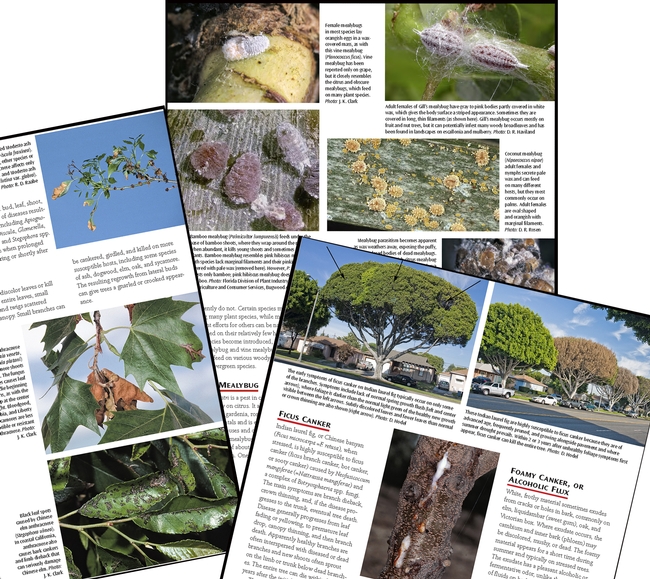
Problem-Solving Tables include the specific pests for each of over 200 genera of trees and shrubs, referring to the pages with their photographs and management solutions.
Pests of Landscape Trees and Shrubs: An Integrated Pest Management Guide, Third Edition, can be ordered through the ANR catalog. For more information, see the UC IPM website.
Wasps May Help in the Fight Against Brown Marmorated Stink Bug
From the UCANR Green Blog Scientists are rearing tiny Asian wasps in quarantine and evaluating...

